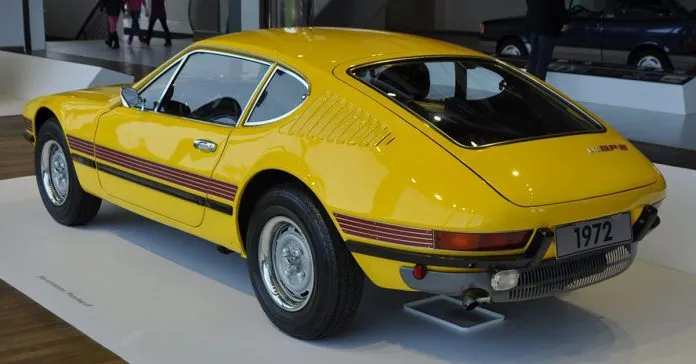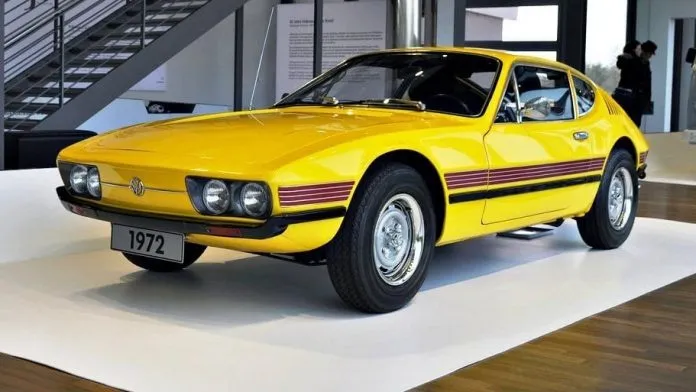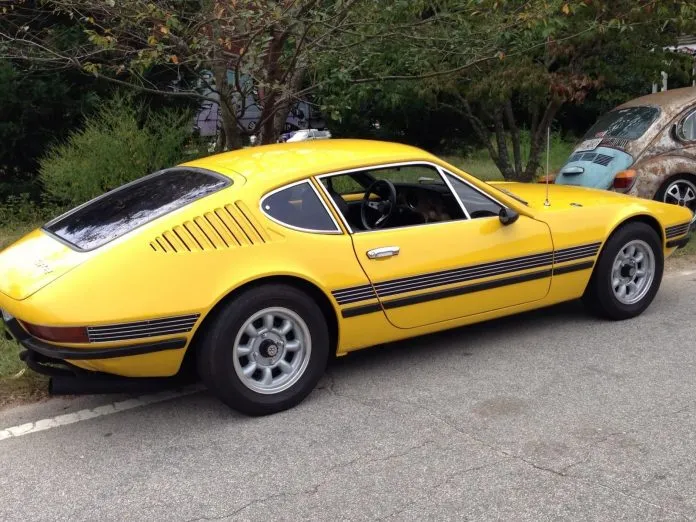If you are passionate about classic cars, the Volkswagen SP2 is undoubtedly one of those models that deserves to be highlighted. Launched in the 1970s, the SP2 was a sports car manufactured exclusively by Volkswagen do Brasil for the domestic market. This car was not only a beautiful and sought-after machine, but also an expression of the creativity and independence of the Brazilian subsidiary of Volkswagen. At the time, the Brazilian market was closed to imports, which gave space for the creation of national sports cars like the SP2. Let's embark on this nostalgic journey to understand why the SP2 was and continues to be one of the most beloved cars in Brazil.
Origins and Development of SP2

The SP2 was born in a period of economic and import restrictions in Brazil. In the 70s, the only sports car options on the market were the Karmann Ghia and Karmann Ghia TC, both models already considered outdated for their time. Therefore, when the then president of Volkswagen do Brasil, Rudolf Leiding, began the project for a new sports car, the objective was to develop a car that would bring modernity and performance, meeting the tastes of the young and car-loving public in Brazil.
O independent project was called “Project X” and began development in 1969. Under the leadership of engineer Senor Schiemann, the design team included talents such as José Vicente Novita Martins, Marcio Piancastelli, Jorge Yamashita Oba and Antonio Carlos Martins. The first public presentation of the SP2 prototype took place at German Industry Fair, in March 1971, attracting curious looks and the expectation that the model would soon go into production.
However, it would still be another year before the SP2 hit the streets, as the Volkswagen team needed to make some adjustments to ensure the car was ready to take on Brazilian roads. Finally, in 1972, the Volkswagen SP2 was launched, featuring a combination of bold design and exclusive features that set it apart from any other model at the time.
Why “SP”?

The origin of the name SP is the subject of different theories. Some say that the acronym represents "São Paulo", named after the Brazilian state where the car was designed. Other sources suggest that the name is an abbreviation of “Special Project” (Special Project) or even “Sport Prototype” (Sports Prototype). Despite the theories, it was the nickname “SP” that stuck, and the car became known as Volkswagen SP2.
Unfortunately, the SP2 also gained a less friendly nickname: “No Power”. This was due to the limited performance of its engine, especially when compared to other sports cars. However, the design and exclusivity of the SP2 made up for the lack of power, making it a coveted car among Brazilians at the time.
Performance and Technical Specifications
The Volkswagen SP2 was built on the platform of the Variant, a popular Volkswagen model at the time. It was offered in two versions: the SP1, with a 1600 cc engine, and the SP2, with a 1700 cc engine. Although the SP2 had better performance, it was still far from being a powerful car compared to international sports cars. The SP1 version, with its modest 65 hp, was quickly withdrawn from the line due to low acceptance. The SP2, with 75 hp, could reach up to 160 km/h and had an average consumption of 10 km/l.
These numbers may seem modest by today's standards, but the SP2 was a bold attempt by Volkswagen to create a sports car that would cater to the Brazilian market, with the technology and resources available in Brazil at the time. Although it was not the fastest car, it offered a sporty driving experience, with a exquisite interior, superior quality finish and distinctive design.
A Brazilian Design Icon

What really captivated SP2 fans was its innovative design. The SP2 had aerodynamic lines, a low and wide body, and details such as recessed headlights and a sleek rear end that set it apart from any other Volkswagen of the time. The car's styling reflected European trends of the 1970s, but with a Brazilian twist. The vibrant colors and detailed interior finish made the SP2 a symbol of sophistication and modernity.
Inside the SP2, the driver found a full instrument panel and a sports steering wheel, which gave the feeling of being in a real racing car. In addition, the car offered a good amount of interior space for the driver and passenger, something unusual for sports cars of the time.
Challenges and Decline of the Volkswagen SP2
Despite all its innovation, the SP2 suffered from performance issues. At the time, Volkswagen's engine technology was limited to air-cooled boxer engines, which were not known for their power. Although the SP2's 1700 cc engine was more powerful than the SP1's, it still struggled to deliver convincing sporting performance. This issue led to the SP2 being criticized, with some drivers claiming it was "pretty but slow."
This deficiency ended up limiting sales of the SP2 and, in 1976, Volkswagen decided to end production. In four years, approximately 10,200 units of the SP2 were manufactured. The end of the SP2 marked the end of an era for Volkswagen sports cars in Brazil, but it also solidified the car's status as a classic.
Legacy and Appreciation of SP2
Over the years, the SP2 has become a icon among classic car collectors. Its limited production and striking design have made the SP2 a collector's item. Today, a Volkswagen SP2 in good condition can fetch high prices on the classic car market, with prices ranging from R$ 100 thousand It is R$ 200 thousand, depending on the condition and history of the vehicle.
The passion for the SP2 transcends borders, and the model is especially appreciated in European countries, where it is recognized as a rarity. Many enthusiasts value the SP2 not only as a car, but as a work of art and a piece of history of the Brazilian automotive industry. It is common to find the SP2 at classic car events and exhibitions around the world, always attracting the attention and admiration of visitors.
Volkswagen SP2 and Its Competitors of the Time
In the 1970s, the Brazilian market had few direct competitors for the SP2. Among national sports cars, the Puma and Miura were the main models that offered some competition. The Puma, in particular, had a loyal following and slightly superior performance, especially in models with more powerful engines. However, the SP2's unique design and Volkswagen branding made it a desirable choice, even if its performance was not the best.
Additionally, the SP2 had superior build quality, a more refined interior, and a finish that set it apart from other sports cars of the time. This made the SP2 an interesting option for those looking for a stylish, well-built car.
Why is SP2 still loved?
Part of the fascination with the SP2 comes from the fact that it represents an important period in Brazilian automotive history. At a time when the market was closed to imports, Volkswagen do Brasil managed to create an entirely new and exclusive car for the Brazilian market, something that was extremely rare for a multinational automaker. The SP2 also symbolizes the creativity and talent of Brazilian engineers and designers, who faced the technological limitations of the time to deliver a car that is still admired today.
The Volkswagen SP2 is more than a car; it's a legend representing a time when Brazil was determined to develop its own automotive identity. The SP2 won the hearts of Brazilians with its bold design, unique history and unmistakable charm.
Conclusion
If you are a classic car enthusiast, the Volkswagen SP2 is a model worth knowing and, if possible, driving. It is a reflection of the spirit of innovation and independence that characterized the Brazilian automobile industry in the 1970s. The SP2 may not have the power of other sports cars, but its beauty and exclusivity continue to delight generations of admirers.
In a collector's market, the SP2's value continues to rise, becoming one of the most valuable Brazilian classic cars. And if you find an SP2 in good condition, you can be sure that you are looking at a true Brazilian treasure.









